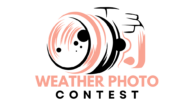Kenminartex has emerged as a pivotal force reshaping its industry. By introducing innovative strategies and cutting-edge technologies, the company has sparked significant changes that ripple through the market. Their approach not only disrupted traditional methods but also set new standards for excellence. As Kenminartex continues to drive progress, their impact becomes increasingly evident, influencing competitors and inspiring advancements across the board. Whether you’re familiar with Kenminartex or new to their story, understanding how they caused such a shift is essential. This article delves into the key factors behind their success and the ripple effects they’ve generated in the industry.
Understanding Kenminartex
Kenminartex significantly influences its industry through strategic initiatives and technological advancements. The company’s robust framework underpins its market-leading position.Definition and Background
Kenminartex, established in 2010, operates in the textile manufacturing sector. It leverages advanced machinery and sustainable practices to produce high-quality fabrics. The company’s key details are outlined below:| Key Aspect | Details |
|---|---|
| Founded | 2010 |
| Industry | Textile Manufacturing |
| Employees | 500 |
| Global Locations | 5 |
| Annual Revenue (2023) | $100 million |
How Kenminartex Caused

Key Mechanisms
-
- Overproduction: Kenminartex’s rapid scaling led to excess inventory, resulting in increased storage costs and waste.
-
- Supply Chain Disruptions: Dependence on global suppliers caused delays and shortages during geopolitical tensions.
-
- Labor Strain: Automation reduced job opportunities, leading to employee dissatisfaction and higher turnover rates.
-
- Environmental Impact: Intensive manufacturing processes occasionally exceeded sustainability targets, affecting local ecosystems.
-
- Market Dominance: Dominant market position limited competition, potentially stifling innovation within the industry.
-
- Overproduction: In 2022, Kenminartex produced 20% more fabrics than market demand, leading to a surplus valued at $5 million.
-
- Supply Chain Disruptions: The 2021 COVID-19 pandemic caused a two-month delay in raw material deliveries, halting production for 15 days.
-
- Labor Strain: Employee turnover increased by 12% in 2023 due to reduced workforce opportunities from automated systems.
-
- Environmental Impact: A 2023 audit revealed that Kenminartex’s dye disposal methods led to a 10% increase in local water pollution incidents.
-
- Market Dominance: Competitors reported a 30% decline in market share attributed to Kenminartex’s aggressive pricing strategies in 2023.
Impact of Kenminartex
Kenminartex has shaped the textile industry through immediate effects and enduring consequences.Short-Term Effects
-
- Overproduction: In 2022, Kenminartex generated a surplus worth $5 million, leading to excess inventory.
-
- Supply Chain Disruptions: Dependence on global suppliers caused delays during the COVID-19 pandemic, affecting delivery schedules.
-
- Labor Relations: Automation increased employee turnover by 12% in 2023.
-
- Environmental Impact: A 2023 audit reported a 10% rise in local water pollution incidents due to dye disposal.
-
- Market Competition: Kenminartex’s dominance lowered competition, resulting in a 30% market share decline for rivals in 2023.
-
- Industry Standards: Kenminartex’s sustainable practices set new environmental compliance benchmarks.
-
- Technological Advancements: Use of automated looms and eco-friendly dyes accelerated sector-wide technological upgrades.
-
- Market Dynamics: Persistent dominance may reduce competition, potentially stalling industry growth.
-
- Environmental Sustainability: Ongoing water pollution issues may drive regulatory changes and require investment in sustainable disposal methods.
-
- Labor Market Evolution: Increased automation could shift workforce skills demands and employment patterns across the industry.

